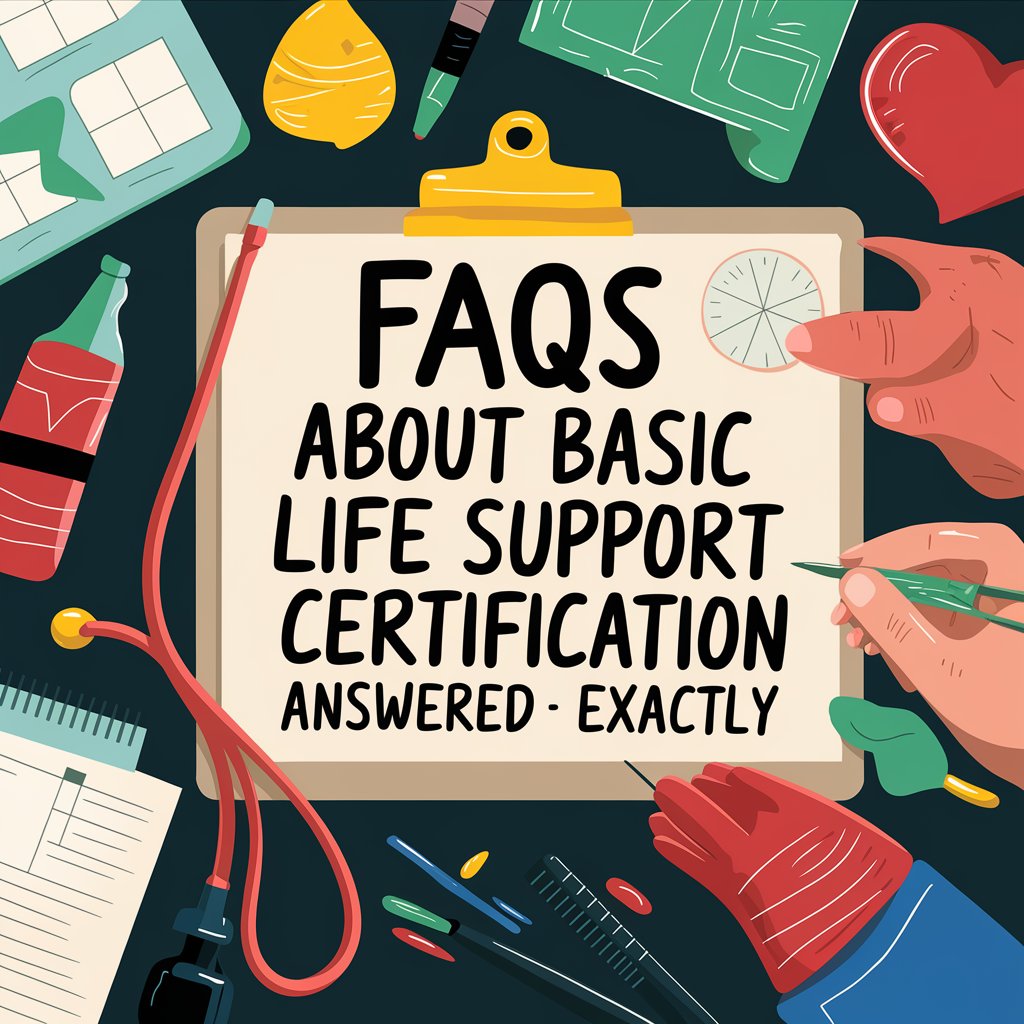TOC:
- Introduction
- Basic Life Support Certification FAQs
- Final Thoughts
Basic Life Support (BLS) certification is a critical skill that can save lives during emergencies. This essential training teaches individuals how to respond to cardiac arrests, choking incidents, and other life-threatening situations. In the United States, over 350,000 out-of-hospital cardiac arrests occur annually, with only a 12% survival rate in 2023. However, prompt and proper BLS can double or triple a person’s chances of survival, highlighting the urgent need for more trained individuals.
This guide addresses common questions about BLS certification, covering its importance, the certification process, and the required skills. We’ll explore who needs this training, how to obtain it, and why it’s crucial in various professions.
Basic Life Support Certification FAQs
BLS comprises a set of highly essential life-saving skills that can be used during emergencies. Some of the incorporated skills include CPR, the use of the AED, and relief from airway obstruction.
Let’s discuss some of the frequently asked questions about BLS certification, its purpose, and who needs it—giving you an outline of the importance this skill holds in some of the emergent cases.
- Who needs BLS certification?
BLS certification is usually obligatory for several people, including:
- Healthcare providers (doctors, nurses, dentists)
- Emergency medical technicians (EMTs) and paramedics
- Firefighters and police officers
- Coaches, lifeguards, and swimming and fitness instructors
- Childcare providers and teachers
Last but not least, anyone who would like to be prepared to save lives, community volunteers and others can do so at any time with BLS certification.
- How can you get BLS Certified?
To achieve BLS certification, one must take a course through accredited agencies. The course usually includes classroom instruction, practice time, a written examination, and a skills test.
- Classroom instruction provide the basics of CPR and AED use, among many other resuscitative techniques.
- You will have hands-on practice time to provide application on manikins with what you have learned.
- You will also be tested on the material through a written exam, while a skills test proves that you can perform the techniques properly.
- The whole process normally takes about 4-5 hours to complete.
- What’s the difference between BLS and CPR?
While often used interchangeably, BLS and CPR are not the same:
- CPR focuses specifically on chest compressions and rescue breaths.
- BLS includes CPR but also covers other life-saving techniques like using an AED and clearing airway obstructions.
- BLS is a more comprehensive set of skills that build upon the foundation of CPR.
- What does BLS training involve?
During a BLS certification course, you will be trained to perform high-quality CPR on adults, children, and infants. This involves chest compressions and breaths, rescue breathing modified for age.
- You will also learn how to use an automated external defibrillator, or AED, and deliver a shock safely to help reestablish a normal heartbeat.
- You will learn how to assist people who are choking by performing techniques such as the Heimlich maneuver.
- You’ll master team dynamics and how to work with others during a resuscitation effort.
- How much does BLS certification cost?
The cost of BLS certification can vary widely depending on factors such as:
- The training provider,
- Course format (in-person vs. online)
- Location
- Whether materials are included
On average, a BLS certification course costs between $60 and $180. Some employers may cover the cost of certification for their staff.
- Is online BLS certification valid?
Many organizations now offer online or blended BLS courses. These can be valid, but it’s important to consider:
- Some employers or organizations may require in-person training,
- Online courses should still include a hands-on skills assessment,
- Ensure the online provider is accredited and recognized in your field,
- Always check with your employer or licensing board to confirm if online certification is acceptable.
- What’s the difference between BLS for Healthcare Providers and BLS for Laypeople?
While both courses cover essential life-saving skills, there are some key differences:
- BLS for Healthcare Providers is more in-depth and may cover additional topics,
- Healthcare provider courses often include two-rescuer scenarios,
- Layperson courses focus on single-rescuer techniques,
- Healthcare Provider certification may be required for certain jobs.
- How do I maintain my BLS skills between certifications?
To keep your BLS skills sharp:
- Practice CPR compressions regularly,
- Review BLS algorithms and guidelines,
- Stay updated on any changes in BLS protocols,
- Consider taking refresher courses,
- Use online resources and apps for ongoing learning.
- Can BLS certification be renewed online?
Yes, BLS certification can often be renewed online. Many accredited organizations offer online renewal courses for healthcare providers and laypeople. These typically include video lessons, interactive simulations, and a final test. However, you may also consider these points:
- Some employers or certifying bodies may require an in-person skills assessment.
- Always check with your employer or the certifying organization to ensure online renewal meets their specific requirements before proceeding.
- How Do You Benefit from a BLS Certification Career?
A BLS certification can boost one’s career in many ways:
- It awards an opportunity for a job, as most jobs in healthcare and other safety areas possess this certification;
- It shows a dedicated signal toward acquiring must-have skills to improve one’s professional development,
- It could help a person advance in a chosen health or public safety career by allowing the individual to venture into higher certifications and advanced training.
- Also, being BLS certified will make you much more confident and responsive in an emergency, making you an asset to any team.
Final Thoughts
The ability to perform basic life support in an emergency is a critical skill that can save lives. It is important to understand the certification procedure, regardless of whether your employment requires you to have a BLS certification or you just want to gain these vital skills for yourself.
Maintaining current knowledge of techniques and engaging in regular practice will guarantee that you are prepared to offer life-saving assistance when it is most needed.





